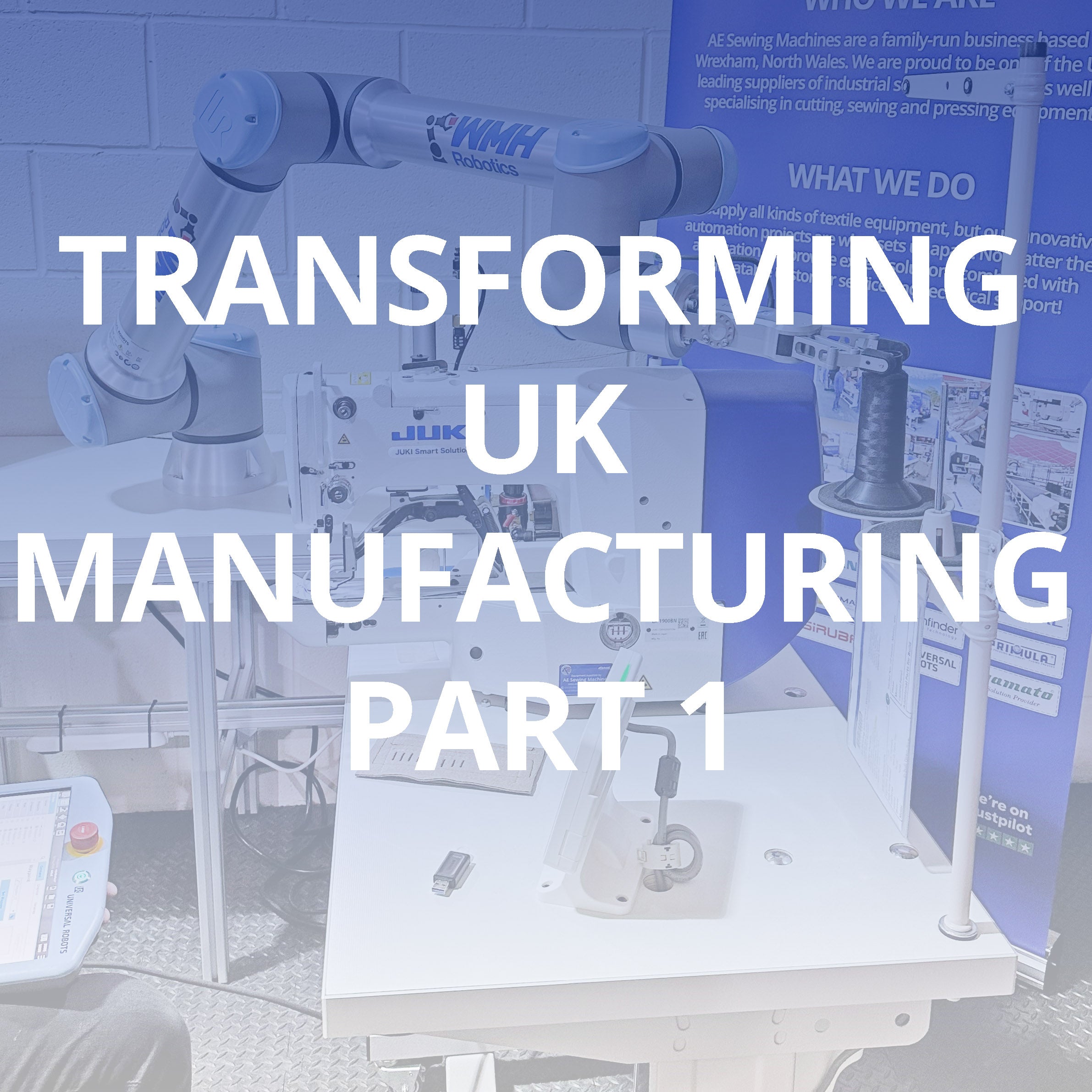Last week three members of our team attended an automation and robotics conference at the Advanced Manufacturing Training Centre, where speakers (including our commercial director Rhys) gave informative presentations. It was great to have a discussion with so many likeminded people. Automation in manufacturing is something we’re always working to develop solutions for, so we’ve summarized some of the key takeaways from the event here for those who couldn’t attend!
In this blog we highlight how the UK ranks in terms of automation and robotics on a global scale and discuss some of the challenges we face when trying to modernize our manufacturing processes.

How the UK compares to the rest of the world in terms of automation and robotics in manufacturing:
The following points use Figures taken from the World Robotics 2022 report by the International Federation of Robotics, released in January 2023.
- The UK productivity rate (measured by average output per worker) is 16% below most other G7 Countries.
- Copenhagen business school found the UK could increase productivity by 22.3% just by keeping up with other countries in terms of robotics and automation.
- The UK’s industrial robot density increased by 77% from 2015 to 2020 (71 to 100) but we are still far behind the global average, which almost doubled in the same period.
- According to the International Federation of Robotics, the UK ranked 22nd in the world in terms of robot density in manufacturing, and our ranking is falling. Robot density is measured as the number of robots per 10,000 employees in manufacturing.
- South Korea, a small country like the UK, ranked first in the world for robot density, with 1,000 industrial robots per 10,000 manufacturing employees in 2021.
- 73% of all newly deployed robots were installed in Asia, with China being by far the largest market. China installs more robots per year than all other countries put together. Labour is no longer cheap, so they are preparing for a decline in the human workforce, making sure that it doesn’t have an impact on their future manufacturing capabilities.
- Certain industries within the UK, particularly automotive and aerospace, have been more proactive in adopting robotics and automation technologies, but in others we are falling behind.
These statistics highlight how the UK is far from globally competitive in terms of our manufacturing output. Other nations have heavily invested in automation and robotics to enhance their manufacturing capabilities. We need to be more competitive with our processes if we are to encourage growth going forward and keep up with the rest of the world!

Challenges in the UK:
The UK has a traditionalist mentality – we have historically placed a lot of faith in classic manufacturing methods, to the point that some of our equipment and practices are archaic. If we could modernize our factories and embrace the automation of simple, repetitive tasks (whilst preserving traditional techniques which have stood the test of time) it would make a huge difference to our production rates.
“UK manufacturers are proud to keep their old machines running, Germans are proud of their new machines”.
Concerns about the cost of implementation – there is a general view that automation, and robotics in particular, comes with much too high a cost to be a viable option for most businesses. However, this is no longer the case! Advanced equipment has become far more accessible to purchase, and the increase in productivity that it provides makes it a worthwhile investment for many companies.

Perception that automation may lead to job displacement – Although robots do have the potential to replace humans in certain areas, it is only the dull, repetitive jobs which are likely to be automated. Embracing robotics gives employers an opportunity to use people where their skills add value, providing more rewarding jobs, and making reshoring financially viable. Jaguar Land Rover, for example, have invested in thousands of robots and have created thousands of jobs which would likely have been filled abroad without automation.
A lack of skilled operators – Surprisingly, a lot of modern robotic systems are very easy to control and don’t require special training. Modernizing is especially important going forward, as the younger generations have been brought up with tech, are taught about robotics in schools, and aren’t wired for manual labour. Studies have also shown that the workforce today is more receptive to investment and advancement than in previous years – they know that their jobs are more secure if the company is forward thinking and competitive!

There are many companies in the UK who are embracing automation and have a forward-thinking perspective, but the figures suggest that this is far from being the norm. Other countries have a positive reputation for valuing engineering and embracing efficient new technology, and it would benefit us hugely if we could do the same. Our reluctance to embrace automation and robotics has largely been as a result of misconceptions surrounding the loss of traditional manufacturing methods, preventative costs, and the threat to human jobs. It isn’t all bad, however! In our next blog post we’ll be discussing some reasons why it’s a great time to invest in automation and robotics.
